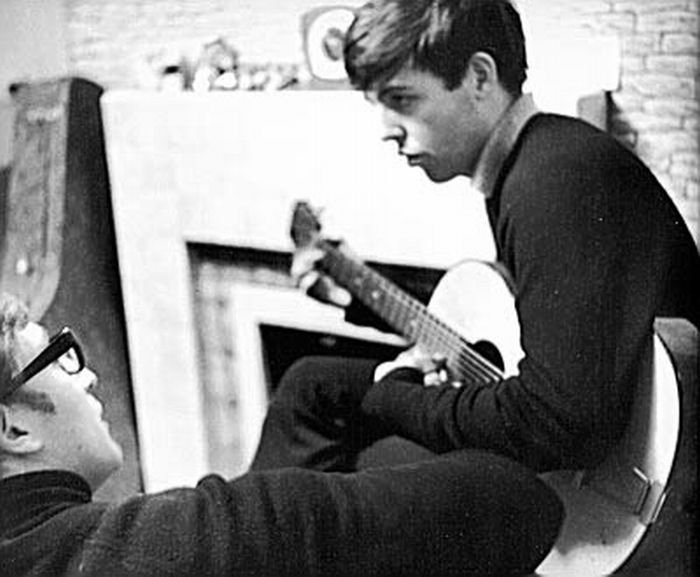|
|
History: Early Years Of The Beatles
|
Compared with Paul's songs, all of which seemed to keep in some sort of touch with reality, John's had a psychedelic, almost mystical quality. ... John's imagery is one of the best things about his work—"tangerine trees", "marmalade skies", "cellophane flowers." ... I always saw him as an aural Salvador Dalí, rather than some drug-ridden record artist. On the other hand, I would be stupid to pretend that drugs didn't figure quite heavily in The Beatles' lives at that time. At the same time they knew that I, in my schoolmasterly role, didn't approve. ... Not only was I not into it myself, I couldn't see the need for it; and there's no doubt that, if I too had been on dope, Pepper would never have been the album it was.
Harrison echoed Martin's description of his stabilizing role: "I think we just grew through those years together, him as the straight man and us as the loonies; but he was always there for us to interpret our madness—we used to be slightly avant-garde on certain days of the week, and he would be there as the anchor person, to communicate that through the engineers and on to the tape."
• In the studio
The Beatles made innovative use of technology, treating the studio as an instrument in itself. They urged experimentation by Martin and their recording engineers, regularly demanding that something new be tried because "it might just sound good". At the same time they constantly sought ways to put chance occurrences to creative use. Accidental guitar feedback, a resonating glass bottle, a tape loaded the wrong way round so that it played backwards—any of these might be incorporated into their music. The Beatles' desire to create new sounds on every new recording, combined with Martin's arranging abilities and the studio expertise of EMI staff engineers such as Norman Smith, Ken Townsend, and Emerick, all contributed significantly to their records from Rubber Soul and, especially, Revolver forward. Along with studio tricks such as sound effects, unconventional microphone placements, tape loops, double tracking and vari-speed recording, they augmented their songs with instruments that were unconventional for rock music at the time. These included string and brass ensembles as well as Indian instruments such as the sitar in "Norwegian Wood (This Bird Has Flown)" and the swarmandal in "Strawberry Fields Forever". They also used early electronic instruments such as the Mellotron, with which McCartney supplied the flute voices on the "Strawberry Fields" intro, and the clavioline, an electronic keyboard that created the unusual oboe-like sound on "Baby, You're a Rich Man".
|
|









